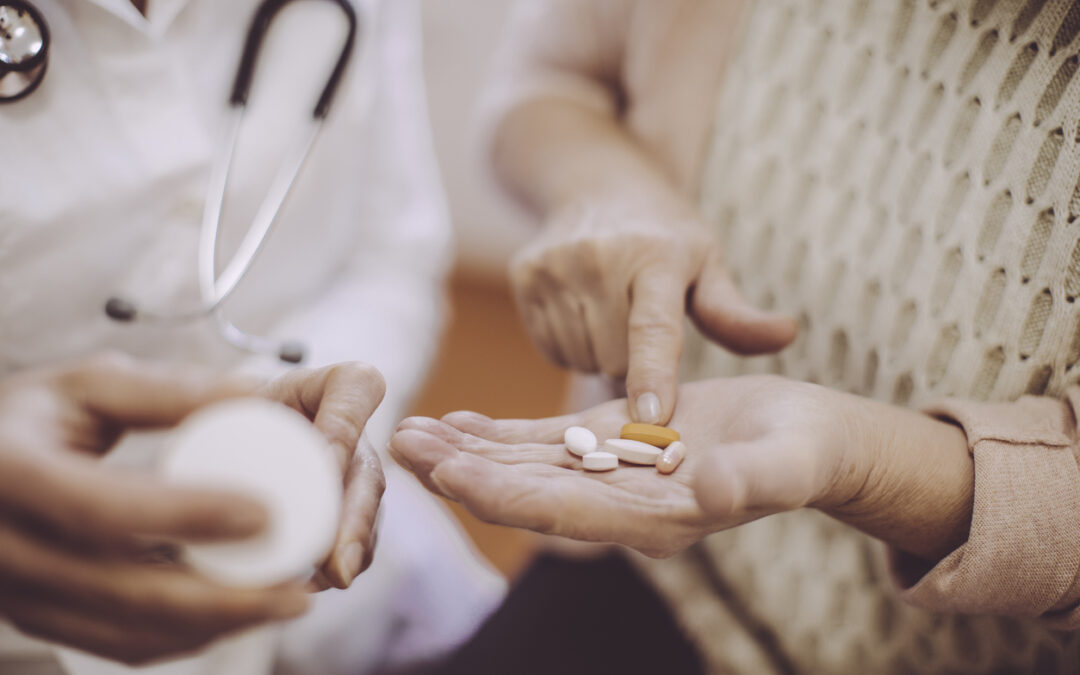Many people take medication regularly, whether to treat chronic conditions or to relieve acute symptoms. Patients often come across the term “generic drug” or wonder why their usual medication suddenly looks different or has a different name. But what are exactly generic drugs?
Generic drugs are medicines that contain the same active ingredient in the same dosage as a previously approved original preparation. They are launched on the market as soon as the original’s patent protection, which usually lasts for 20 years, has expired. Since generic drugs do not require costly new development, they are more affordable than the original preparation.
Nevertheless, generic drugs must undergo a strict authorisation procedure. Among other things, they must be proven to have bioequivalent properties. This means that the active ingredient is absorbed by the body in a comparable manner and is available to the organism in the same quantity as the original.
From the Original Drug to the Generic Drug
Before a new drug hits the market, it goes through a long development process, ranging from the identification of the active ingredient to preclinical studies, from the development of the dosage form to clinical trials, and finally to the authorisation procedure and market launch. This process can take many years and it entails considerable expenses. To protect the investment, the manufacturer receives a temporary patent, which usually lasts for 20 years. During this period, no other manufacturer is allowed to market a drug with the same active ingredient. Once the patent expires, generic manufacturers can offer the drug on the market at a lower price, provided they can prove that it is equivalent to the original in terms of quality, efficacy, and safety.
Same Active Ingredient – Different Tablet?
Generic drugs often differ from the original preparations in their name, the appearance of the packaging, or the color and shape of the tablet. However, the effect and dosage form are the same. The quality, efficacy, and safety of a generic drug are tested according to the same standards as any other drug. There may be minor differences in the so-called excipients, which are responsible for the shape or shelf life, for example. These are usually negligible, but may play a significant role for individual patients with intolerances.
Why Are Generic Drugs Cheaper?
The significantly lower cost of generic drugs is mainly due to the fact that the high development costs for research, preclinical and clinical studies, and market launch have already been borne by the original manufacturer. Generic drug manufacturers can rely on this data and focus on production, thereby reducing prices.
Generic Drugs in the Healthcare System
Generic drugs play a central role in the supply of medicines. In Germany, generic drugs now account for around three quarters of all prescribed medicines in terms of the number of packages dispensed. At the same time, they are only responsible for around 7% of the drug expenditure of statutory health insurance funds. These figures illustrate that generics make a major contribution to nationwide healthcare provision without placing an excessive burden on the financial resources of the healthcare system.
Through their widespread use, generics help to ensure the long-term supply of drugs, particularly for chronic diseases.
What Does This Mean for Patients?
Particularly in the context of long-term therapy, it may happen that the same active ingredient is dispensed under different names or in a modified form, for example, with a different color of packaging or a different shape and color of the medication. This can be unfamiliar and confusing for patients. However, there are several reasons for substituting medications. One of these reasons is what are known as discount contracts. These are price agreements between statutory health insurance companies and pharmaceutical manufacturers. If a patient is prescribed a medication by their doctor that is not included in their health insurance company’s discount contract, this medication will be replaced at the pharmacy by a medication with the same active ingredient for which the health insurance company has concluded a discount contract.
In such situations, it can be helpful to check not only to the brand name, but also the active ingredient contained in the medication. This should be the same in both preparations, even if the manufacturer or the appearance of the packaging or medication differs. In case of doubts, it is advisable to seek advice from the pharmacy or the doctor’s office. A basic understanding of your own medication can help to avoid confusion and strengthen your confidence in the treatment.
How mediteo Can Support You
If you take different medications or regularly receive new prescriptions, the mediteo app can help you keep track of them. It helps you manage your medication in a structured way – regardless of whether you are taking original preparations or generic drugs.
Sources
-
Patentschutz & Generika: Motor für medizinischen Fortschritt
-
Was Generika für unser Gesundheitssystem bedeuten – Pro Generika e.V.
-
IGES-Studie: hundert Prozent Generikaeinsatz bei wichtigen Krankheiten
-
Generika in Deutschland 2024: Rückgrat der Versorgung wird unwirtschaftlich | Gelbe Liste
-
Generika und Originalpräparate – Unterschiede im Überblick – apotheken-wochenzeit.de
Back to the Blog.

